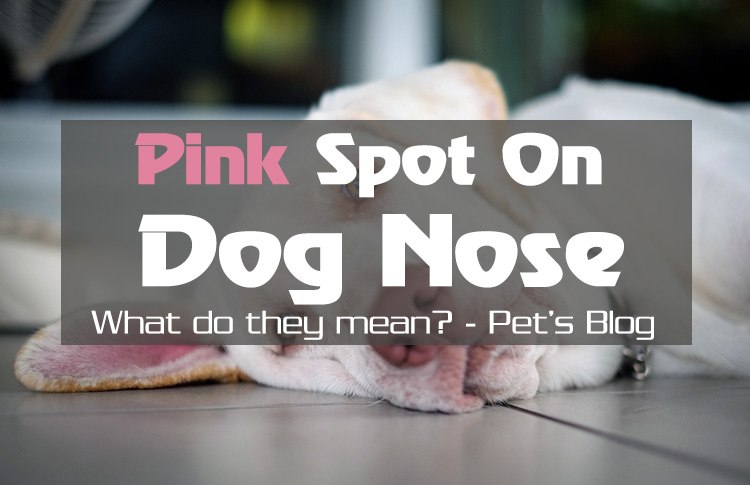Have you been noticing little pink spots around your dog’s snout? This could mean a lot of things about your pup’s health!
Usually, a normal dog’s snout would be completely clean, and his button nose completely devoid of any color other than black (depending on the weather, of course) when pink spots are covering your dog’s snout, no matter how little in number and size they first appear in, it would be natural for you to start to worry. So, why do dogs have pink spots on their noses? 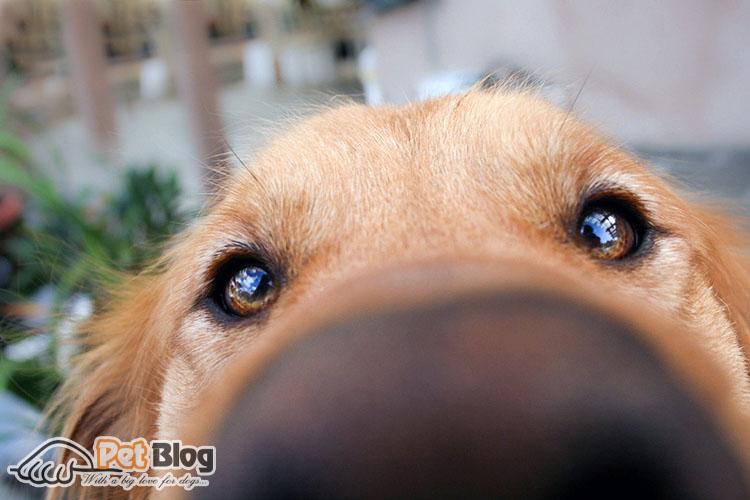 There are a number of reasons why this would be happening to your dog, and it could either be a normal thing that happens, or the kind of reason where you most definitely should take your dog to the vet before it starts to spread. Read further so that you would understand what’s going on, and if it isn’t something that you should worry about.
There are a number of reasons why this would be happening to your dog, and it could either be a normal thing that happens, or the kind of reason where you most definitely should take your dog to the vet before it starts to spread. Read further so that you would understand what’s going on, and if it isn’t something that you should worry about.
Change in the Pigmentation in a Dog’s Nose
There are many different kinds of dog breeds and all of them vary in shape and sizes. Color also plays a factor in their differences, as you can obviously tell, after all, it is inside of their genetic code. This can also go for a dog’s nose color. For example, a dog’s nose can be colored black just like every other regular dog, but it can also be naturally pink and liver colored.
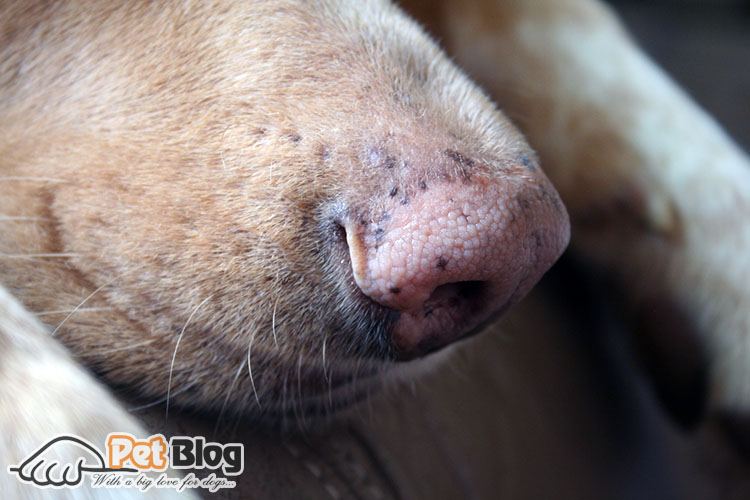
Just in case, look up your dog’s breed info on the internet and see if their nose color is indeed the way it is. Certain dog breeds are more likely to have a pink nose throughout their lives. If you’re curious about such breeds, here are a few examples:
Australian Shepherd.Boxer.Cocker Spaniel.Dalmatian.Pitbull.Pointer. Siberian Husky
If it is, no more need to worry since it how they’re meant to be, however, if it isn’t, then you have some things to start reading about, after all the extra information could do you some good in the future.
There are times when a dog’s nose color starts to fade into something else, making it different from the others. This is what we call a loss of pigmentation, and it could mean a few different things.
[tcb-script async=”” src=”//pagead2.googlesyndication.com/pagead/js/adsbygoogle.js”][/tcb-script][tcb-script](adsbygoogle = window.adsbygoogle || []).push({});[/tcb-script]
- A Medical Condition
There are many medical conditions regarding a dog’s nose, some of them good and some of them bad, whichever the case, you have to bring your dog to the nearest vet that you are comfortable with and have them looked over by a professional so you know for sure that there is nothing wrong with your dog.
- Completely Natural
It could just be a part of what their kind of breed goes through when they are aging, a completely natural process that you don’t have to worry over because your dog might just be finally letting go of their stages of being a pup.
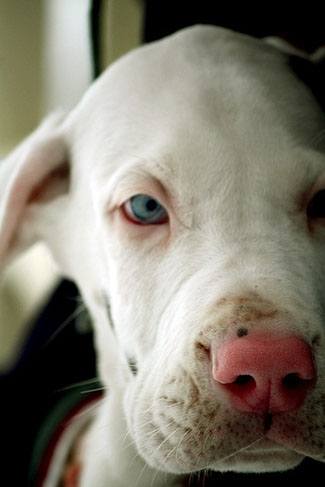
- Winter Nose condition
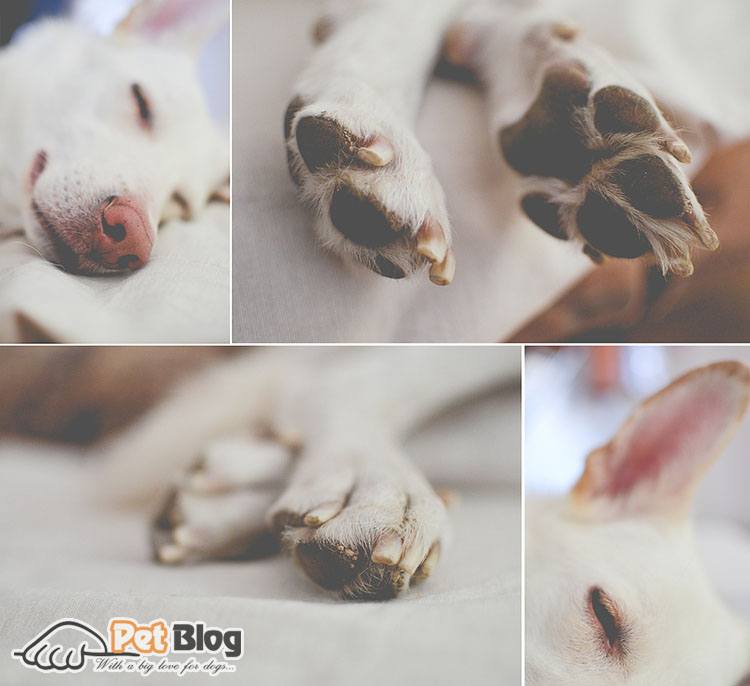
Depending on the season, or winter to be more specific, a lot of dog noses are going to because pink or white-ish due to the winter months arriving.
Many breed varieties have this condition when going through the cold seasons, and it’s nothing to be afraid about due to the fact that it turns black when the summer months come back.
======================================
Have you found that one of these descriptions fits as the reason to your dog’s color change on their noses, you would already know what to do.
However, this isn’t at all everything that you need to think of, there is more ahead of you that you should keep note inside of your mind. You never know, your pup might need this in the future.
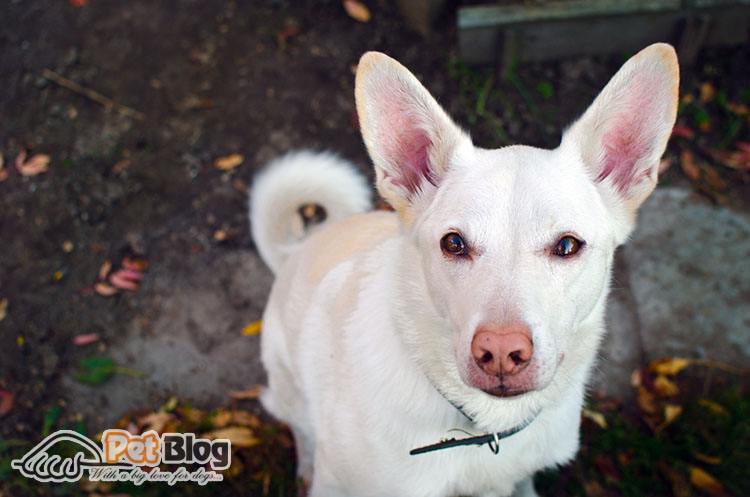
Perhaps it is a Skin Disease?
If you find that none of those descriptions have matched the condition that you believe your dog has, then you were right to scroll down further for we just might have the answer to that problem.
Skin diseases aren’t an uncommon thing for a dog to have, after all, it could be inherited or gained from their times across the fields or under the scorching sun.
With dogs being the types of animals who would enjoy the outdoors, it’s no surprise that they would get things like this. Most of the time, they appear on a dog’s nose.
So, what are the different skin diseases that would relate to your dog’s nose having pink spots?
- Dog Mites
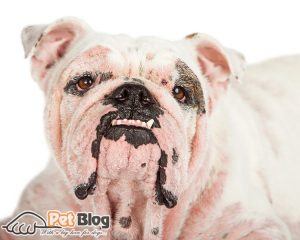 A condition that is, of course, familiar to us. With an increased amount of dog mites, a dog would have a hard time living with all the biting and the skin that they are destroying. They would be living inside of the skin… inside of their pores and hair follicles.
A condition that is, of course, familiar to us. With an increased amount of dog mites, a dog would have a hard time living with all the biting and the skin that they are destroying. They would be living inside of the skin… inside of their pores and hair follicles.
If not taken care of, the marks on your dog’s nose would spread further until they are in total agony. With mites there, dogs would be more prone to secondary bacterial or other skin infections.
- Fungal Infections
This is when multiple types of fungi have already started to infect your dog’s skin. To people, this is what they would call ‘dog ringworms’.
Not only would it be appearing on your dog’s nose, if the infection starts getting worse soon it would be spread out all over your dog’s body, and that’s definitely not something you would want your dog to go through. Pink will be everywhere and their fur will start falling apart.
- Bacterial Infection
Or in other words, Leptospirosis. It’s sort of similar to that of a fungal infection. It’s what happens when a type of bacteria called the leptospira interrogans enter inside of their skin so that they would reach their blood stream. Once they’re inside they start to spread and there’s not stopping it until you’ve seen it on your dog’s skin.
However, since this is a bacterial infection, it would be easy to fend it off if your dog’s immune system was good, however, if it isn’t, then they would be at the highest risk for severe complications.
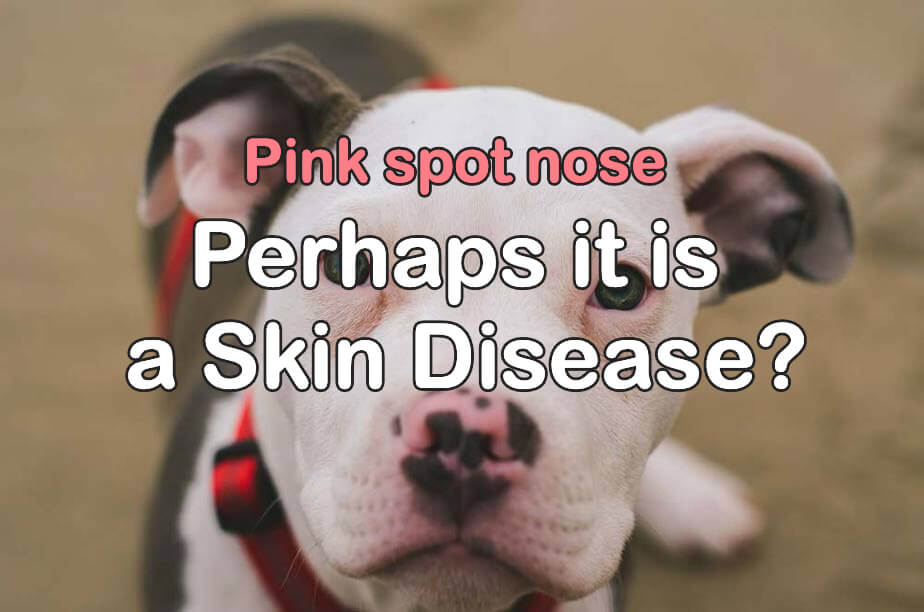
- Discoid Lupus Erythematosus (DLE)
DLE is an autoimmune disease that primarily affects the skin, including the nose. It can cause depigmentation, redness, scaling, and ulceration. Treatment typically involves the use of immunosuppressive medications, topical treatments, and sun protection.
- Pemphigus Foliaceus:
This is another autoimmune disease that can cause pink spots, along with crusting, scaling, and blistering of the skin. Treatment usually involves immunosuppressive medications prescribed by a veterinarian.
- Ringworm
Despite its name, ringworm is not caused by a worm but rather a fungal infection. It can affect the nose, causing circular patches with a red or pink color. Treatment may involve antifungal medications, both topical and oral, as well as thorough cleaning of the dog’s living environment.
Have you found the reason as to why your dog has started getting little pink spots all over their snouts? Was it something that you realized wasn’t something worth fretting about? If so, that is very good news, after all, your dog is safe for another day of walking, loving, and just plain being a loved dog!
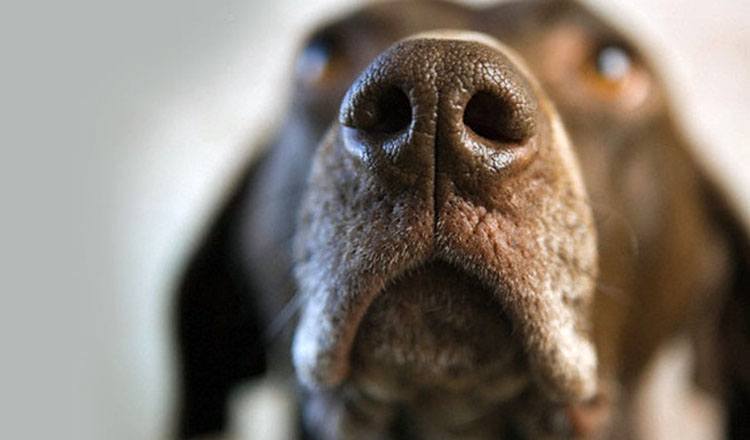
Frequently Asked Questions about a pink spot on dog nose
#1 . What should I do if I notice a pink spot on my dog’s nose?
If you realize your dog has a pink area on their nose, the best way to call your vet. You’ve made it to the middle of the article, and realized that one of those reasons could be definitely the cause, then go now and find a way to the nearest vet possible and ask a professional veterinarian for the cure of these diseases. Time counts, the earlier the better! I should know, after having a personal experience to this.
If the area has the spots (not rising or getting bedbugs), the veterinarian might be able to reassure you that maybe one of the other doctors said in the article.Although your vet may still advise you to come check on your health, you may feel comfortable considering the nose of the dog’s nose has no serious cause.On the other hand, if you notice a lump or a pink swelling on the nose, you should set an emergency appointment with the vet as soon as possible.
Moreover, you don’t need to panic, but the important thing is to ask for medical advice as soon as possible because some of the problems associated with the dogs on the nose can seriously affect the dog’s health.In the meantime, don’t rub any product or treatment on the nose of a dog unless it’s directed by a vet.
You should try to keep your dog from scratching their nose too much and watch your dog carefully to know any serious changes you might need to report to the vet.
However, there are also several breeds with pink noses for life including Pitbull, Boxer, Cocker Spaniel, Siberian Husky, Poodle, Dalmatian, Doberman, Pointer, Samoyed, Golden Retriever, Irish Setter and Australian Shepherd
#2. Can you prevent your dog from getting Snow Nose?
There is no known way to prevent snow nose. While snow nose is generally harmless and doesn’t require treatment, if you wish to minimize its occurrence, here are a few suggestions:
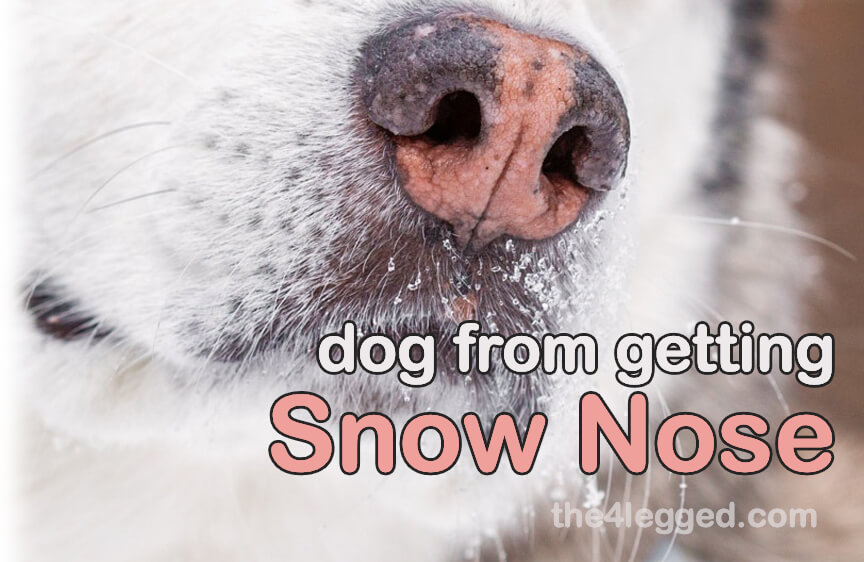
- Protect from the cold: Exposure to extreme cold temperatures may trigger snow nose in some dogs. Limit your dog’s time outside during cold weather, especially in freezing conditions.
- Provide indoor shelter: Ensure your dog has a warm and comfortable indoor shelter during winter months. This helps minimize exposure to cold temperatures and potentially reduces the chances of snow nose.
- Sun protection: Prolonged exposure to the sun, particularly during winter months, can contribute to snow nose. Apply pet-safe sunscreen to your dog’s nose, particularly if they spend significant time outdoors during sunny winter days.
- Consider a snout balm: Applying a snout balm or moisturizer to your dog’s nose may help protect and moisturize the skin, potentially reducing the occurrence of snow nose.
- Balanced diet and supplements: A nutritious diet, rich in essential vitamins and minerals, may promote healthy skin and coat. Consult with your veterinarian about incorporating supplements that support skin health, such as omega-3 fatty acids or vitamin E.
#3. How will I know if my dog’s pink spots are not a common issue?
If your dog has pink spots on their nose and you’re unsure if it’s a common issue or something more concerning, it’s best to consult with a veterinarian for an accurate diagnosis. A veterinarian will be able to examine your dog, evaluate the pink spots, and determine if they are a cause for concern.
Here are a few signs that may indicate your dog’s pink spots require veterinary attention:
- Change in behavior or overall health: If your dog’s pink spots are accompanied by other symptoms such as lethargy, loss of appetite, excessive scratching, or any behavioral changes, it may indicate an underlying health issue that requires veterinary attention.
- Rapid or progressive changes: If the pink spots on your dog’s nose appear suddenly, grow in size, or rapidly worsen over a short period.
- Ulceration or bleeding: If the pink spots on your dog’s nose develop ulcers, open sores, or start bleeding, these can be signs of infection or more serious underlying conditions.
- Discomfort or pain: If your dog shows signs of discomfort, pain, or excessive rubbing or scratching of their nose, it may indicate that the pink spots are causing discomfort and require veterinary attention.
#4. Can a dog’s nose color change over time?
Yes, a dog’s nose color can change over time. Nose color in dogs is primarily determined by the presence and distribution of melanin, the pigment responsible for coloration in the skin and coat.
While some dogs are born with a certain nose color that remains consistent throughout their lives, others may experience changes in nose color due to various factors: Age, seasonal changes, sun exposure or some health condition.
How to care for your dog’s pink spot on the nose
If you raise a dog with a pink nose, you’ll need to remember that he needs more care and more closely than the black nose. The pink nose is sensitive to the sun and can burn.
Any time your dog’s out in the sun, you should put some sunscreen on their noses to protect them from developing skin cancer. The veterinarian can present the product of a safe anti-sunscreen for the pets you can use to keep them healthy.
Moisturize: Keep the skin on your dog’s nose moisturized to prevent dryness and cracking. You can use a pet-safe nose balm or moisturizer recommended by your veterinarian to help keep the skin supple and hydrated.
Avoid irritants: Be cautious of potential irritants that could come into contact with your dog’s nose, such as harsh chemicals or cleaning products. Keep these substances away from your dog’s reach to prevent irritation or damage to the sensitive skin.
Pink noses in puppies
A brand new puppy you’ve brought home might still have a totally pink nose. Most puppies were born with pink noses, some of them would turn into dark colors while the others weren’t.
Medium, if your puppy nose moves color, it changes in 8-12 the first week.You can see by testing the color of the nose, the final result of the mix of pink and black. The puppy’s nose has a mixture of pink and brown and can maintain the color of the dog’s life.
Pink spots on your dogs can mean two things. It could either be something that naturally happens due to its genetics or the changes in the seasons, a reason that you don’t have to worry about at all or it could be that it is the first signs of a deadly disease or infection that would cause your dog a lot of suffering.
If you know someone who would find this article helpful, don’t be afraid to share this on your social media, you might even be able to save a dog.

